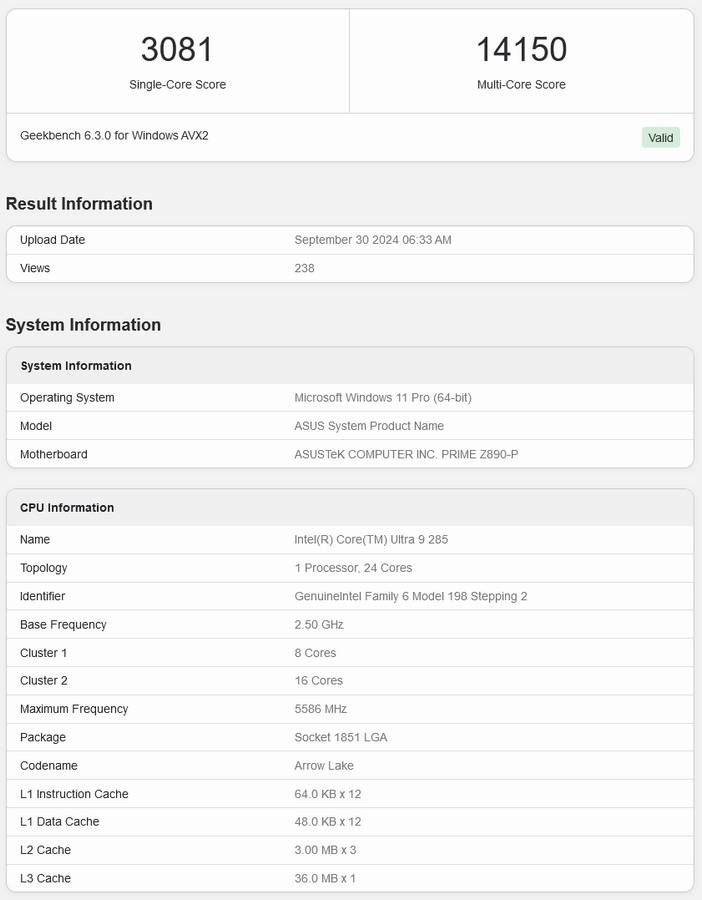Intel’s upcoming Core Ultra 9 285 processor has been spotted in Geekbench 6 database. The chip delivers higher single-core performance compared to its predecessor but struggles in multi-core.
According to a new entry in Geekbench’s database, the Core Ultra 9 285 (non-K) managed to muster 3,081 in the single-core test and 14,150 in multi-core. Compared to its predecessor, the Core i9-14900, this CPU is about 6% faster in single-core, but 23% slower in multi-core. This gap further widens when pitting it up againsst 14900K with its higher base/boost clocks. Here, the locked (non-K) chip gets left in the dust as the 14900K claims a 46% advantage.

Aside from any cache or frequency changes, Core Ultra 9 285 carries the same core count as the i9-14900, i.e. eight P cores alongside 16 E cores. The probable reason for the score discrepancy is likely due to the absence of hyperthreading or an aggressively low power budget. Though frequency may play a role, too, as Ultra 9 285 is listed with a 2.5GHz base and 5.5GHz boost clock by Geekbench. For reference, the 14900 can boost up to 5.8GHz.
With that in mind, score differences can’t be explained by a small frequency reduction. A logical conclusion is the most likely culprit is a tight power budget, probably set to 125W or lower, unlike the K variant which can hit 250W for short durations. This theory is backed by the unlocked Ultra 9 285K results which comfortably beats the i9-14900K even though it also lacks hyperthreading. Complicated, huh?
That said, as usual, we could be peeking at an early engineering sample that can’t extract the full potential of Intel’s Arrow Lake architecture. It is expected that desktop Arrow Lake chips, using 800 Series boards, are launching this month.

